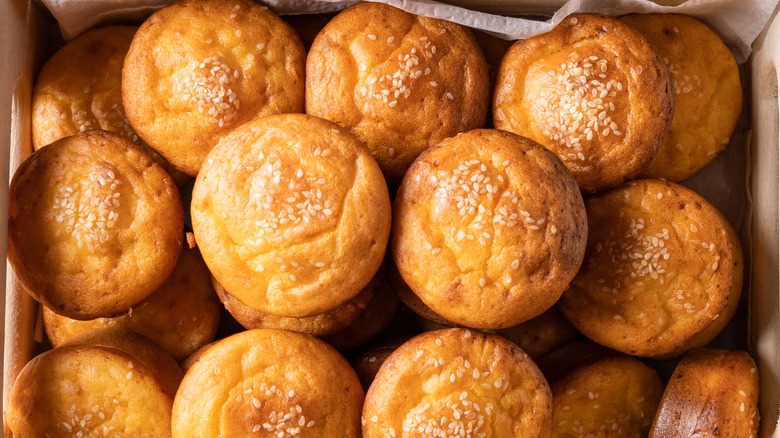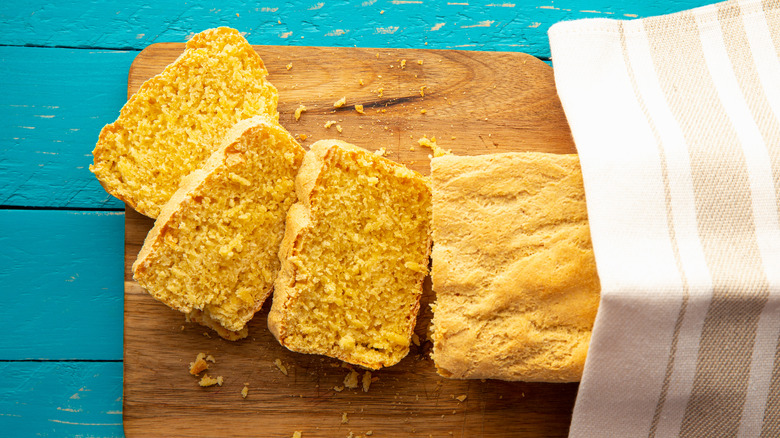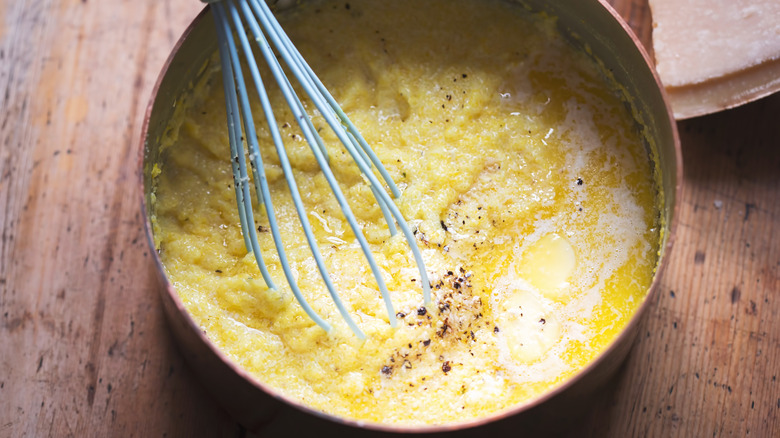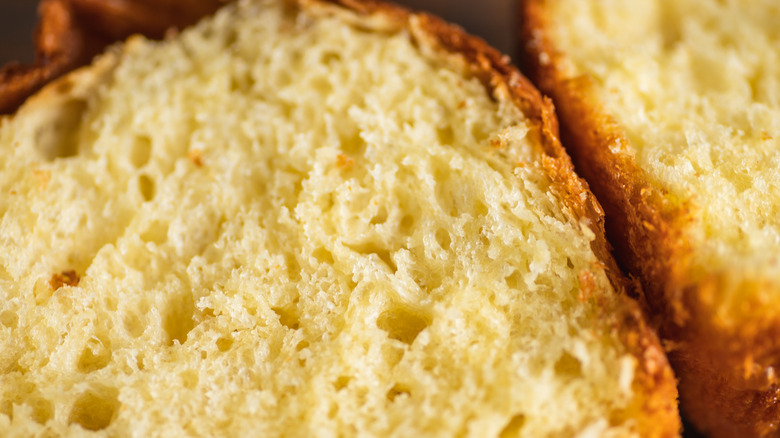New England's Traditional Anadama Bread Features A Sweet Ingredient
New England boasts a lot of traditional food, a few of which may sound strange but are truly delicious. Apple Pie with Cheddar, Baked Bean Sandwich, Clear-Broth Clam Chowder, creamy clam chowder, fried clam bellies, and Jonnycakes are just a few of the wild and wonderful dishes in New England cuisine. For those of you who are wondering, Britannica lists the New England region as most of the Northeastern part of the United States, including Maine, New Hampshire, Vermont, Massachusetts, Rhode Island, and Connecticut because these were the places the English Puritans originally colonized when they arrived on American shores.
Since arriving, the colonists had to adapt to the native crops and resources available in order to survive at the time, and one of the things they had to start using was corn. Cereal grains used to make flour, such as wheat and barley, were not widely available in New England at the time so Europeans learned from the indigenous tribes how to make dishes out of cornmeal, one of which being the sweet Anadama bread.
History of Anadama bread
You know that if a recipe comes out of New England, there is bound to be a good story behind it. The legend is that this loaf of bread was not born out of love but out of anger. According to The Takeout, there are a few variations of the story, but it mainly follows the idea that once upon a time, there was a fisherman married to a woman named Anna.
Anna was not so good in the kitchen and had a limited supply of ingredients available to her back in the early nineteenth century. It is believed that the cranky fisherman threw a bowl of cornmeal porridge into the oven with some flour in desperation and cried out in a rage, "Anna, damn her!" Thus resulting in the first Anadama bread (via New England Today Food). While there isn't proof to back this old wives' tale, it is certainly widely reported as one of those famous myths circulating through the Northeast. And while the first printed recipe for Anadama bread was in the early 20th century, Revolutionary Pie states that New Englanders were baking this kind of bread well before the Civil War.
Anadama bread's Ingredients
The ingredients in Anadama bread are not so typical of a traditional leavened loaf, and it instead looks and tastes quite a bit more like cornbread, and for a good reason. At the heart of this dish are the two staple New England colonial ingredients: Molasses and cornmeal. Cornmeal is light yellow and tastes sweet and nutty in baked goods. Food History states that corn was essential to the Native American diet both before and after colonization. Kernels of corn were ground into a meal or flour and mixed with water to bake. When they introduced this concept to the unprepared European colonialists, the new immigrants took the concept and ran with it.
As for molasses, it has a darker history in the Americas. According to the Massachusetts Historical Society, there was a profit to be made in selling commodities such as sugar, molasses, and rum in the New World. The "Triangle Trade," as it was called, was essential to the growing economy in New England, and molasses was cheaper to buy than refined sugar. Molasses and cornmeal went hand in hand with many colonial dishes, including things like Indian Pudding and cornmeal porridge. These ingredients were thrown in with some yeast and left to stew until the Anadama dough was ready to throw in the fire. It was a bread made with the easiest and most affordable ingredients.
How it's made
It seems simple: A loaf of bread held together with flour and cornmeal and sweetened with some molasses. This New England delicacy is undoubtedly delicious and perfect for toast, soups, and sandwiches year-round. According to A Taste of History with Joyce White what makes this bread truly unique is its yeast. That's right: A leavened cornmeal bread. The people in 19th century New England were wilding out while coming up with all sorts of wacky yet scrumptious recipes.
As for how to whip up this sweet bread, King Arthur Baking states that first and foremost, you'll want to mash your cornmeal and molasses together in a bowl with a pinch of salt and butter (the original recipe may have had less fat and flavor, but modern innovation allows us to make our Anadama bread with a few tweaks). After that, pour in some boiling water until everything runs nice and smooth, then add your flour and yeast once the mixture has cooled to lukewarm. Let your bread rest, and the yeast will do its magic. Then feel free to bake. You'll come out with a sweet, nutty-tasting loaf that is yummy enough for any occasion.



